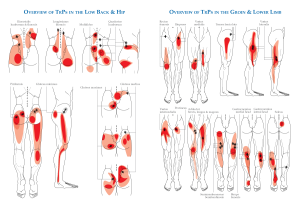Spinal Fusion Surgery: What Is It?

Your doctor may recommend back surgery when conservative treatments like medication, physical therapy, and injections have not adequately relieved symptoms. If you find yourself struggling with back pain, one solution that can potentially alleviate your discomfort is spinal fusion surgery.
Why Is Spinal Fusion Surgery Done?
surgery is a medical procedure that helps reduce back pain by joining two or more bones in the spine. The bones are connected to reshape the spine and provide stability. Spinal fusion is commonly proposed for spinal disorders and conditions when non-surgical treatments have been ineffective.
Some reasons why might be recommended include:
Remember that your case is unique. A comprehensive evaluation and discussion with a neurosurgeon is essential to determine your situation’s most appropriate treatment strategy.
How Is Spinal Fusion Surgery Done?
The surgeon’s chosen technique for spinal fusion depends on:
The specific location of the bones being fused within the spine
The underlying reason for the fusion
Your overall health and body shape
Here is a high-level overview of the spinal fusion process:
1. Accessing the spine
Your surgeon creates an incision to access the spinal bones that will be fused. If approaching from the back, your surgeon will make the incision directly over the spine or on either side.
Alternatively, the incision can be made near the stomach or throat if your spine will be accessed from the front.
2. Preparing the bone graft
The bone graft, a vital fusion component, can originate from a bone bank or be harvested from your body. In some instances, synthetic materials may be utilized instead of bone grafts.
If your bone is being used for the fusion, it is commonly harvested from the pelvic area. To do this, your surgeon makes an incision near the pelvic bone, extracts a small portion, and then seals the incision.
3. The fusion process
The bone graft material is strategically placed between the spinal bones intended for fusion. To stabilize the area during the healing of the bone graft, your surgeon may use metal plates, screws, or rods.
4. Recovering from spinal fusion surgery
After the procedure, you will need to remain in the hospital for a few days and may experience some discomfort and pain. The pain can typically be controlled with medications. You will also need to learn how to move, sit, stand, and walk in a way that promotes proper healing in your spine.
It can take between three to six months for your bones to completely fuse together.
Spinal Fusion Surgery Risks
Spinal fusion is typically a safe procedure. However, like all surgical interventions, it does present certain risks. Potential complications may include:
- Infection
- Bleeding
- Formation of blood clots
- Discomfort at the bone graft site
- Recurrence of symptoms
Experience Relief From Spine Pain
If you’re currently experiencing back pain, know that options are available to you for relief. Our team of medical professionals is fully equipped to assist you in finding the right solution to manage your pain effectively and improve your overall quality of life.
Take the first step towards pain-free living. today!




